At IWT, we’ve created dozens of posts, several videos, and even a full course on how to get better at writing emails that get read all the way through, blog posts that are fun to write and read, and sales pages where people can’t wait to pay at the end.
So this week, we’re collecting our best stuff for our week of 30 tips.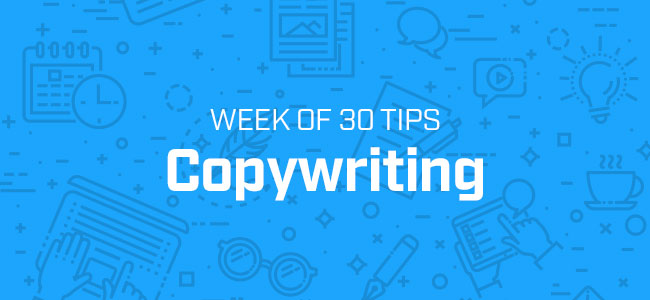
Here are 30 of our favorite tips to help you grow your business using copy. And after each tip is a link to the post where it’s from if you want to read more. Let’s go!
- Tell stories. Don’t just write sentences. Sentences make us read. Stories make us feel. Make your customers feel, rather than read. (Learn more.)2
- Take note of interesting stories while you’re out. A lot of stories that I share in my emails are borrowed from my real-life experiences and observations I’ve made while hanging out with friends. If they’re interesting to me in the moment, I note it and save it for a future email. (Learn more.)
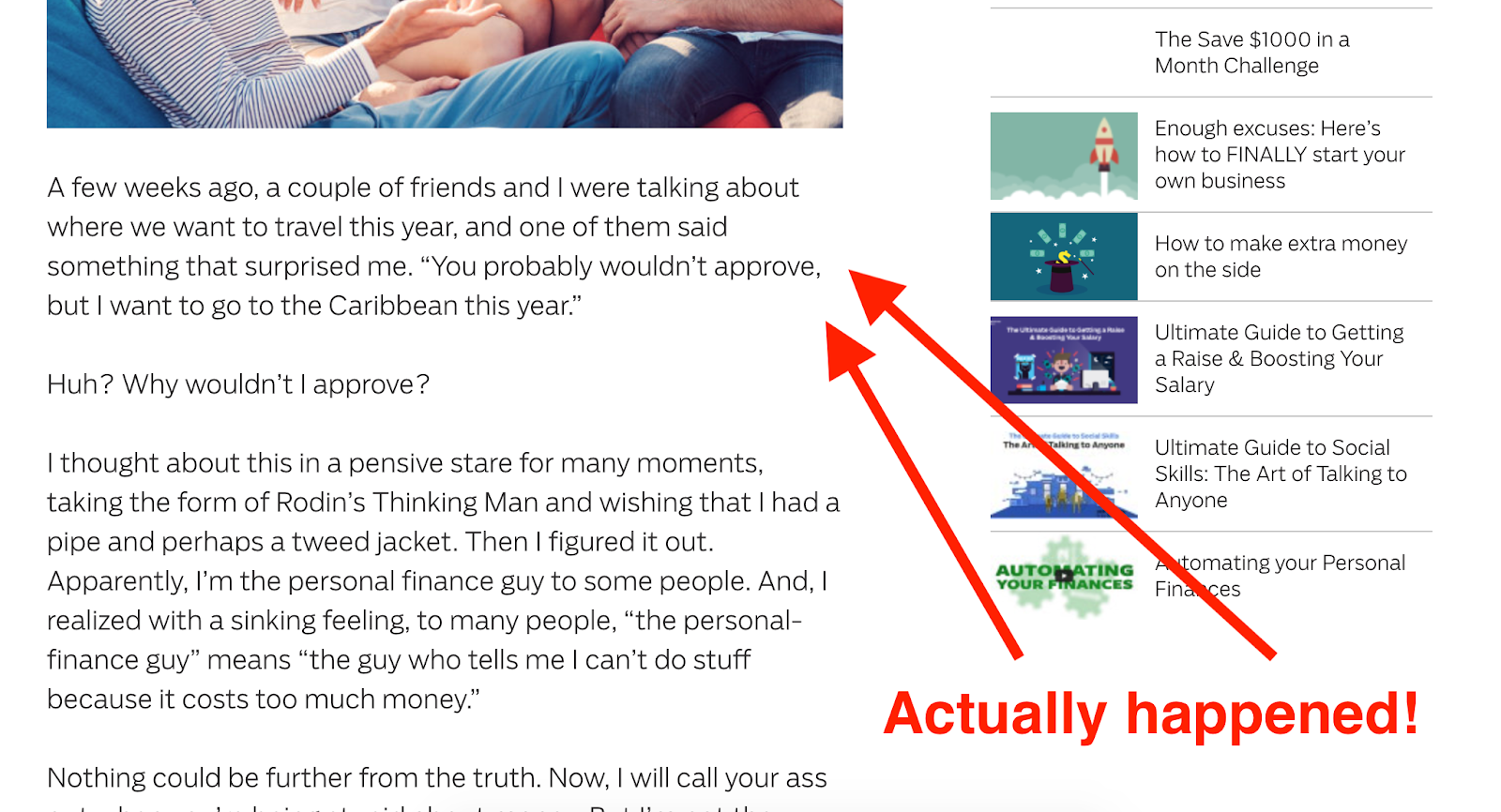
- Use the customer’s own words — even if they aren’t “proper” or “correct.” When a prospective customer tells you, “I wish my arms were toned so I could wear my favorite sundresses and not worry about loose underarm skin,” use THOSE EXACT WORDS in your copy to make it resonate. (Learn more.)
- People want benefits, NOT features. Too many copywriters focus on features (ex: “An 8-week training program”). Instead, focus on benefits (ex: “Take the guesswork out of your workout plan”), aka what your product will DO for your customer. (Learn more.)
- Use this formula to make seductive opt-ins:
Headline: [Achieve XYZ result] with [name of your offer]
Button: Yes, show me [XYZ result]!
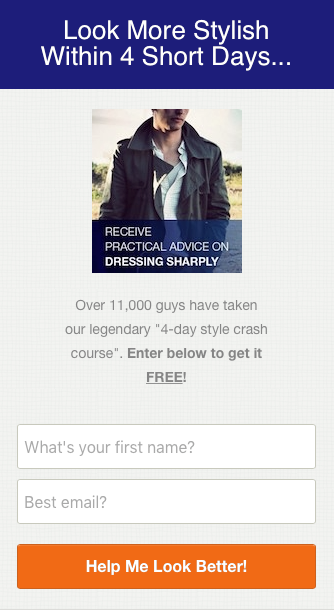
- Put your email to the “Starbucks test.” If your customer were standing in line at Starbucks buying lattes (to stick it to bad personal finance writers) while scrolling through their inbox on their phone, would they stop and open your email or just scroll on by? (Learn more.)
- Sales is the only metric. There’s no such thing as a perfect sales page. Your sales page just has to work, aka get sales. (Learn more.)
- No one cares that you’re a “nice person.” Sorry, people don’t like or trust you because “you’re a good person on the inside.” If you can’t clearly communicate who you are and what you offer, you’re done. (Learn more.)
- Collect anecdotes from real people in a positioning document. Talk to REAL HUMANS. Don’t just guess what your imaginary customers are going through. If you do this right, your sales page will be 80% done before you even write a single word. (Learn more.)
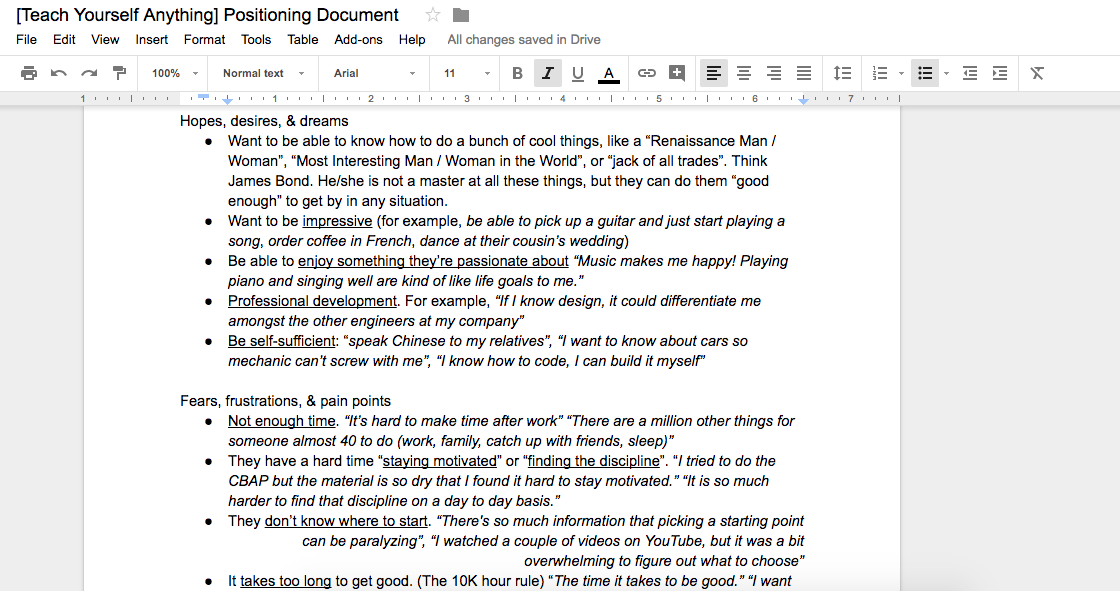
- Write your emails like you’re texting a friend. When you read a text from a friend, it’s casual, relevant, and real. It makes you want to read it. (Learn more.)
- Test your headline by asking these 2 questions. First, will the reader read past the headline? Second, does the reader instantly know who this is for, what it does, and how it does that? A good headline answers “yes” to both questions. (Learn more.)
- Blog posts that become hits are worth the effort. Our top-ranked post got more traffic than the next five most popular pieces — combined! It’s worth spending the extra time to create a hit. Because when you do, your business can take off overnight. (Learn more.)
- Read copywriting books (duh). Our favorites include “All Marketers Are Liars” by Seth Godin and “Influence: The Psychology of Persuasion” by Robert Cialdini. (See our 20 book recommendations here.)
- Spend 2x more time promoting your content as you spend writing it. One way to start: send 10 emails per week to outlets and people who can help. (Learn more.)
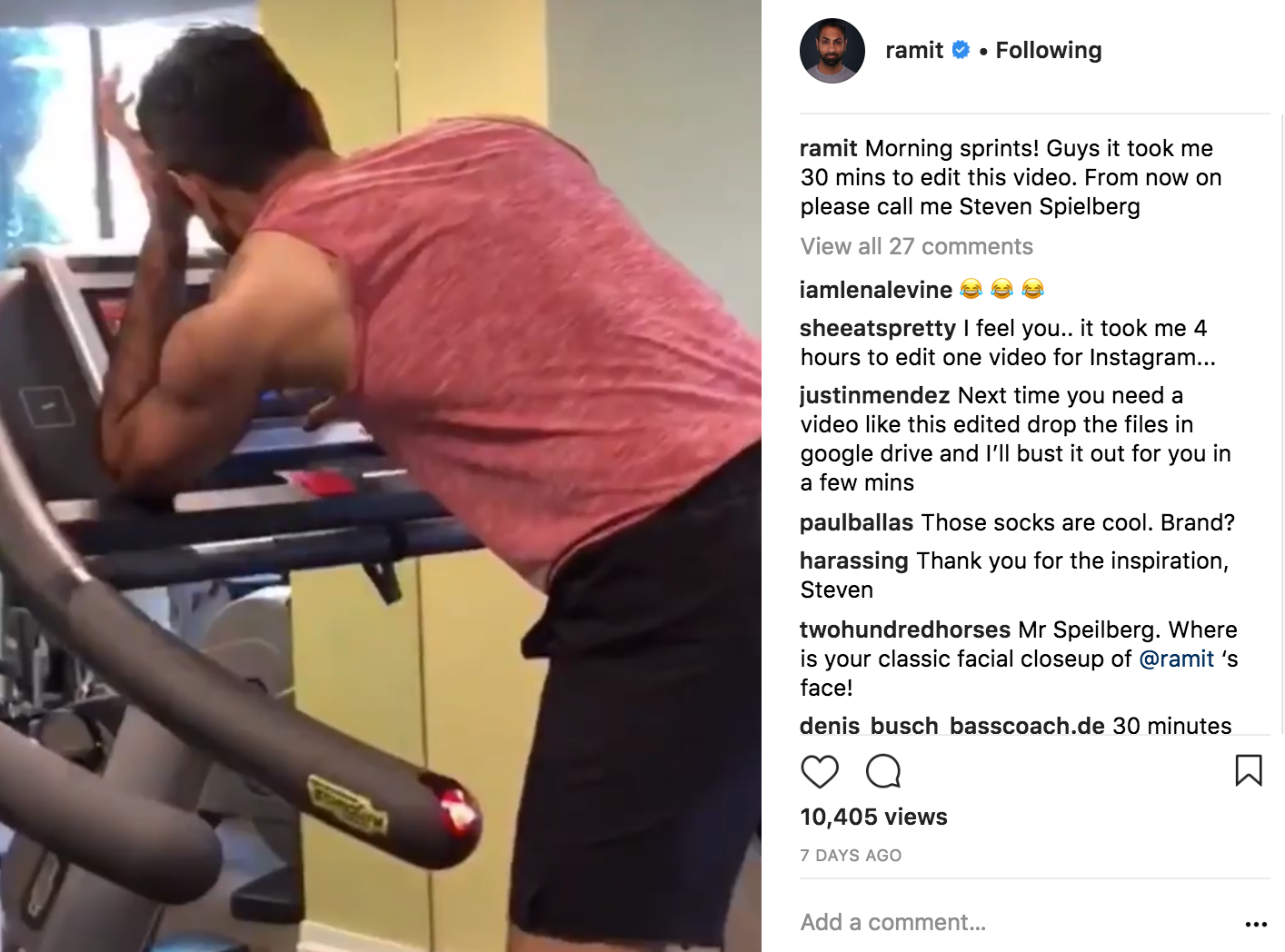
- Here are 10 headline formulas for your blog posts and/or subject lines.
- Ask a question (ex: “What would you tell your younger self?”)
- Give a command (ex: “Go where the fish are!”)
- Use a “how to” headline (ex: “How to drive traffic to your website.”)
- Tell a story (ex: “The fast, cheap way I started my online business.”)
- Make a list (ex: “The 100 things you need to know to start a business.”)
- Announce news that’s novel and relevant to the reader (ex: “New free guide: Launch your online business.”)
- Make the headline time-sensitive or urgent (ex: “I’ve never done a contest like this.”)
- Be direct and address a pain (ex: “So you have skills. How do you get paid for them?”)
- Give the reader useful information (ex: “My checklist for finding a profitable business idea.”)
- Create mystery (ex: “Are we being manipulated?”)
- Also: these are all real posts we’ve written.
Like this blog post? Learn how to create amazing content like this that attracts and engages your target buyers with our FREE Ultimate Guide To Remarkable Content.
- Read your copy aloud. If it sounds weird to you, it’ll read weird to the reader. (Learn more.)
- On sales pages: Paint the dream, then twist the knife. Paint the dream = Helping your reader visualize what it would feel like if they could reach their goals. Twist the knife = Exactly the opposite of painting the dream. Dig deep into the readers’ pain points. (Learn more.)

- Readability matters. This means short paragraphs and sentences. Also be sure to use bulleted lists and subheads to break up the text. (Learn more.)
- Write for your customers — and only your customers. Your writing should zero in on a specific audience. If the copy applies to everyone, you’re doing something wrong. (Learn more.)
- Avoid guilt-tripping people with the “Us vs Them” technique. Use the “Us vs Them” technique to avoid guilt-tripping people when you’re trying to help them. For example:
- DON’T: “It’s almost New Year’s Eve. When was the last time you kept a resolution, hmmmm? You’re failing because you need this new skill.”
- DO: “Look at all those OTHER sad losers who don’t keep resolutions. It’s because they don’t learn how to learn. Suckers. You and I know something different. Don’t be like them.”
- (Learn more.)
- Spend 80% of your time on the headline. Legendary ad man David Ogilvy once said, “Five times as many people read the headline as read the body copy. When you have written your headline, you have spent 80 cents out of your dollar.” (Learn more.)
- The best sales pages have six parts: The headline, introduction, offer, price, testimonials, and CTA. Master them all. (Learn more.)
- There are three steps for a show-stopping headline. First think about who you’re writing for, then draft multiple headlines, finally pick the best headline. (Learn more.)
- Use the “barstool test” to write in a more conversational tone. Write like you’re talking to a friend. What would you say to someone who’s sitting at a bar with you? (ex: “My mission is to drastically reduce process inefficiencies for our valued clients” vs “We help business owners save time and money by cutting out the middleman.”)
- For SEO articles: Be sure to answer the “searcher’s intent.” Is your article answering the question searchers have in their head when they put it in Google? If not, adjust.
- Bonus tip: A good way to know what people are searching for is to see what shows up at the top of Google already. (Learn more.)
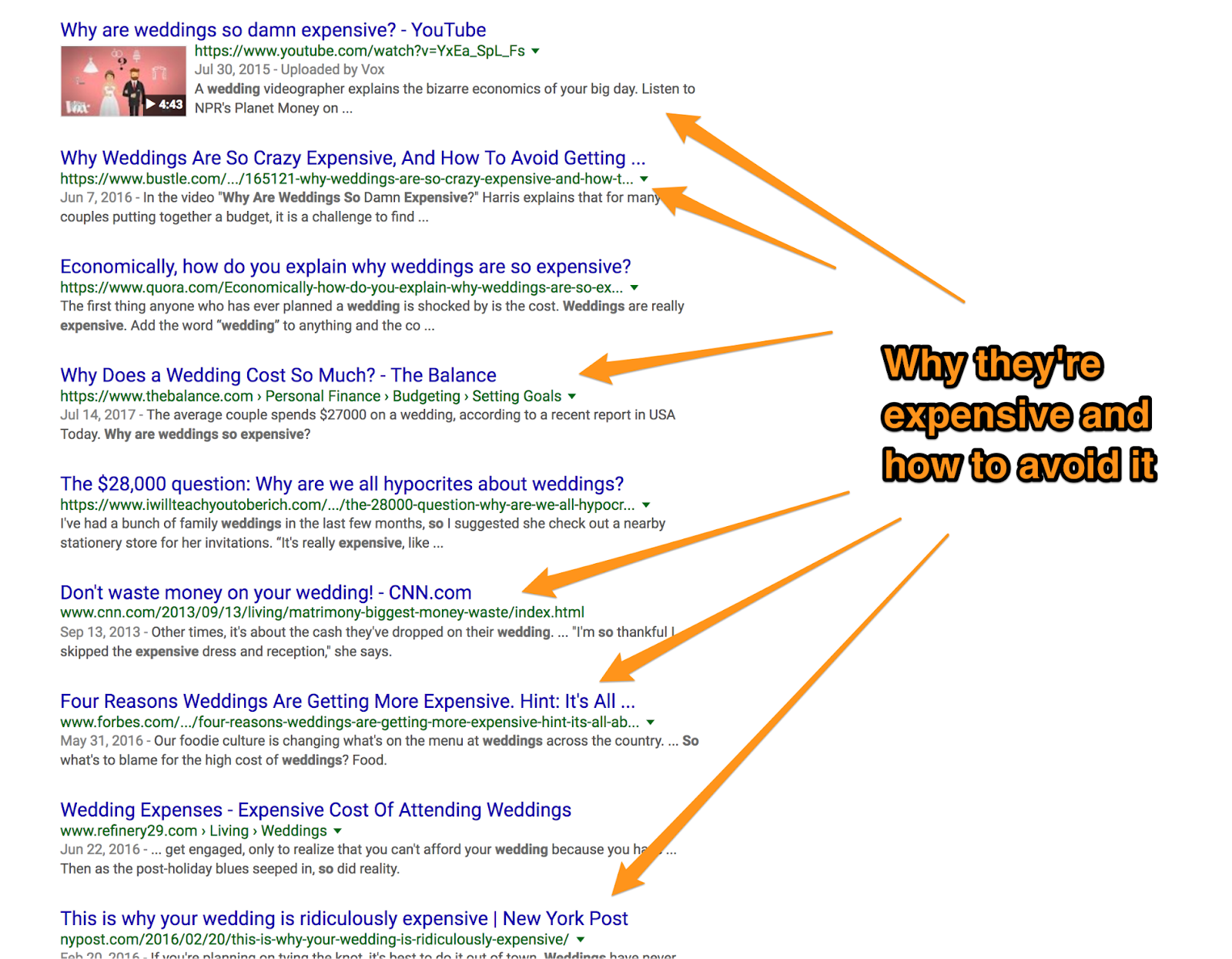
- There are 7 critical elements to getting people to open and read every message you send. They are an intriguing subject line, a personal greeting, a strong hook, an interesting story/lesson, a call-to-action, a personal sign off, and a P.S. (Learn more.)
- Big words don’t make you look smart. They are superfluous, and they obfuscate your meaning. Simplify your verbiage and abstain from utilizing them. (Edify thyself.)
- Use “in words” strategically to show you’re part of the crowd. Every business, industry, or hobby has their own set of buzzwords and phrases. Saying them automatically shows your readers that you are one of them. (Learn more.)
- Grab the readers’ attention with an “unspoken truth.” Got a strong or controversial view about your industry? Let readers know. (Learn more.)
- The most simple — and effective — type of headline for sales pages is the “benefit-driven” headline. You simply tell your reader how your product can help them. (Learn more.)
To get posts like this the moment they are published, follow us on Twitter and on YouTube.
